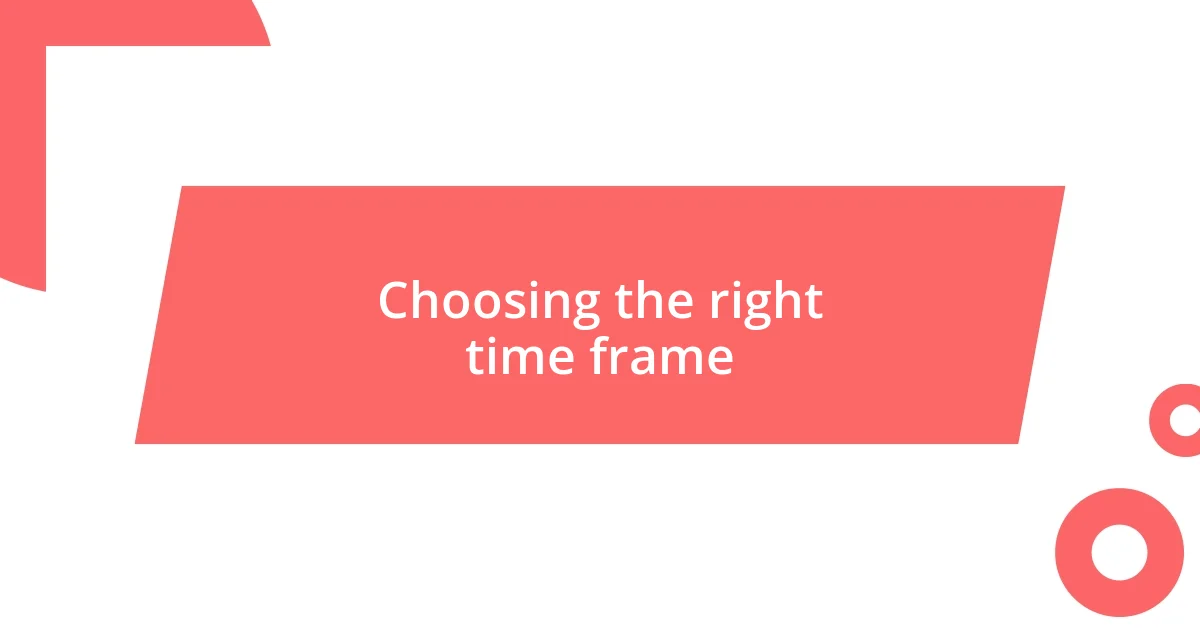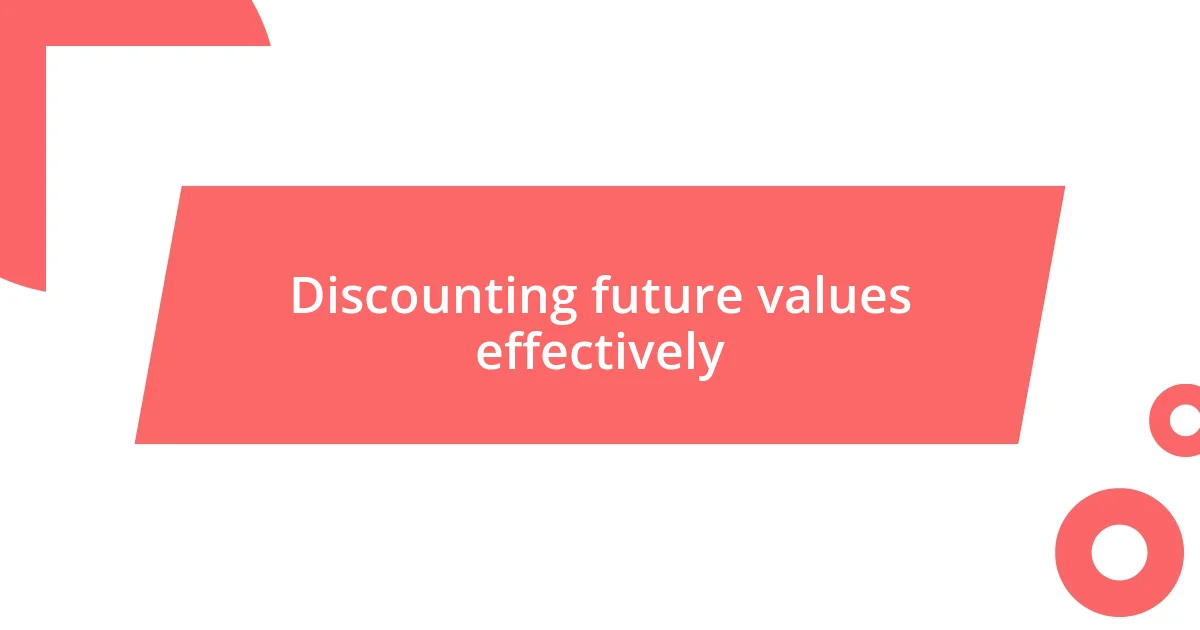Key takeaways:
- Cost-benefit analysis involves comparing direct and indirect costs with measurable and qualitative benefits, making it crucial to categorize and visualize these elements effectively.
- Choosing the right time frame for analysis can reveal hidden long-term gains, shifting the perception of a project’s viability and informing strategic decisions.
- Interpreting the cost-benefit ratio goes beyond numbers; it requires understanding the implications and using insights to guide informed, value-aligned decisions.

Understanding cost-benefit analysis basics
Cost-benefit analysis is a decision-making tool that evaluates the financial implications of a project or investment by comparing its costs with the expected benefits. I still remember when I first encountered this concept during a college project. The sheer simplicity of placing numbers side by side made everything feel more tangible, almost like drawing a clear line between what I wanted and what I could afford. Have you ever felt overwhelmed by choices? That’s where this analysis can help.
At its core, a cost-benefit analysis requires listing the direct and indirect costs involved alongside the measurable benefits, which can sometimes feel like a daunting task. I recall spending hours categorizing expenses in a spreadsheet, only to realize that some benefits were more subjective than I initially thought. It’s interesting to consider—if the benefits are difficult to measure, should they still factor into the analysis? This question often leads to deeper discussions about what truly matters in a project.
As you dig into each item, it’s crucial to remember that not all costs and benefits have a straightforward dollar value. Personally, one project I evaluated not only saved money but also significantly improved team morale—a benefit that was hard to quantify. Emotional or social impacts can be vital, so don’t shy away from including those aspects in your analysis. They might just be the convincing factor that sways a decision in your favor.

Identifying relevant costs and benefits
Identifying relevant costs and benefits is the crux of conducting a thorough cost-benefit analysis. I find that the most effective way to start is by categorizing costs as either fixed or variable. It reminds me of the time I was working on a community project and realized the importance of distinguishing between the initial setup costs and ongoing operational expenses. Each type of cost influences the overall project viability differently, shaping the decisions I ultimately made. Have you ever missed spotting an essential cost because it seemed minor at first glance? It can happen to anyone.
Then, when it comes to benefits, not all are easily quantifiable. I recall a project where the anticipated benefits included boosting community engagement. While metrics like attendance and participation could quantify some aspects, the warmth and connection created were harder to measure. I couldn’t help but think—how does one put a price tag on community spirit? This led me to develop a more holistic view of benefits that extend beyond simple numbers.
To keep your analysis comprehensive, it’s beneficial to create a visual representation, such as a table. Here’s a simple table structure to help illustrate this comparison:
| Costs | Benefits |
|---|---|
| Fixed Costs (e.g., initial investment) | Measurable Benefits (e.g., revenue increase) |
| Variable Costs (e.g., maintenance costs) | Qualitative Benefits (e.g., brand reputation) |

Choosing the right time frame
Choosing the right time frame for your cost-benefit analysis is crucial. I’ve learned that the time horizon you select can significantly impact the perceived viability of a project. For instance, when I evaluated a software investment, looking at a short-term view made it seem less favorable. However, extending that time frame to several years revealed substantial long-term gains that initially went unnoticed. It’s like peering through a narrow lens and then realizing the full landscape is much broader.
To help you determine the right time frame, consider these points:
- Project Duration: How long is the project expected to last?
- Cash Flow Patterns: Are there specific periods when costs or benefits are heavily weighted?
- Interest Rates: Will the time value of money affect your analysis? The longer you wait for returns, the less they may be worth in today’s dollars.
- Market Trends: Are there expected changes in your industry that could impact future benefits?
- Stakeholder Expectations: What time horizons do key stakeholders prioritize in decision-making?
Reflecting on these factors will guide you in choosing a time frame that aligns with both your analysis and the project’s strategic goals.

Quantifying costs and benefits
When quantifying costs and benefits, it often helps to break them down into tangible figures. I remember working on a fundraising campaign where calculating the cost of materials was straightforward, but estimating the value of community goodwill felt like capturing smoke. How do we turn intangible feelings into dollars? By using methods like surveys or feedback forms, I found I could put numbers to those warm sentiments, helping the entire project feel more measurable and real.
To accurately quantify costs, I’ve learned it’s vital to account for both direct and indirect expenses. For example, during a local festival I organized, there were clear costs like venue rental, but I also had to factor in marketing efforts that contributed to participation. Missing those indirect costs would have painted a skewed picture of our overall expenses, leaving me scratching my head over where my budget went. Have you ever overlooked a seemingly minor expense only to find it adds up significantly?
On the benefits side, consider establishing key performance indicators (KPIs) to measure outcomes. I once set KPIs for a digital marketing project, aiming for engagement metrics and conversion rates. As I tracked my progress, it became clear that these quantitative measures not only validated the project’s success but also highlighted areas I could improve. Engaging with numbers in this way transformed my perception of benefits from abstract ideas into hard-earned successes; it’s rewarding to see how each small gain contributes to the larger goal.

Discounting future values effectively
Discounting future values effectively means recognizing the reality that a dollar today is worth more than a dollar tomorrow due to potential earning opportunities and inflation. I vividly recall a project where I had to decide between immediate cash flow or waiting for a larger payout down the line. In the end, I found that using present value calculations, which apply a discount rate to future cash flows, allowed me to see that waiting translated into less value than I initially thought. Has anyone else experienced that eye-opening moment of seeing future projections shrink in value?
When determining the right discount rate, I learned it wasn’t just about slapping a number on it; it’s a nuanced decision. In a previous venture, I chose a discount rate based on current market trends and risk factors, which reflected the project’s true opportunity cost. Thinking back, it was like tuning a musical instrument to find that sweet spot where everything resonates beautifully. What value is hidden away if you don’t consider the time value of money in your analysis?
Moreover, I’ve noticed the importance of context when applying discount rates. In certain high-risk industries, a higher rate can reflect the uncertainty of future benefits, while in more stable sectors, a lower rate may be appropriate. I once faced a dilemma in a renewable energy project; weighing the risks and rewards led me to adjust my discount rate several times as I gathered more data. Isn’t it fascinating how dynamic our financial landscapes can be, requiring us to adapt our analyses as circumstances evolve?

Interpreting the cost-benefit ratio
Interpreting the cost-benefit ratio is about more than just crunching numbers; it’s about understanding their implications. I remember analyzing a new software tool for my team. The cost seemed high upfront, but considering the time savings we’d gain, the ratio started to shift positively. Have you ever hesitated over a hefty price tag only to realize the long-term benefits outweigh the initial expense?
What truly brings the cost-benefit ratio to life is seeing how real-world applications affect decision-making. During a community project I led, we assessed the benefits of improved public transport against the related costs. Initially, the numbers felt daunting, but when I shared those insights with stakeholders, the narrative shifted. It wasn’t merely a financial exercise; it was about enhancing quality of life, creating a deeper connection to the data.
The real magic happens when the cost-benefit ratio translates into informed choices. I once faced a tough decision about investing in a new training program. At first glance, the costs were justified; however, when I calculated the potential increase in employee productivity and morale, the benefits became clearer. Isn’t it powerful to see how figures and outcomes intertwine, guiding us toward decisions that align with our values and goals?















